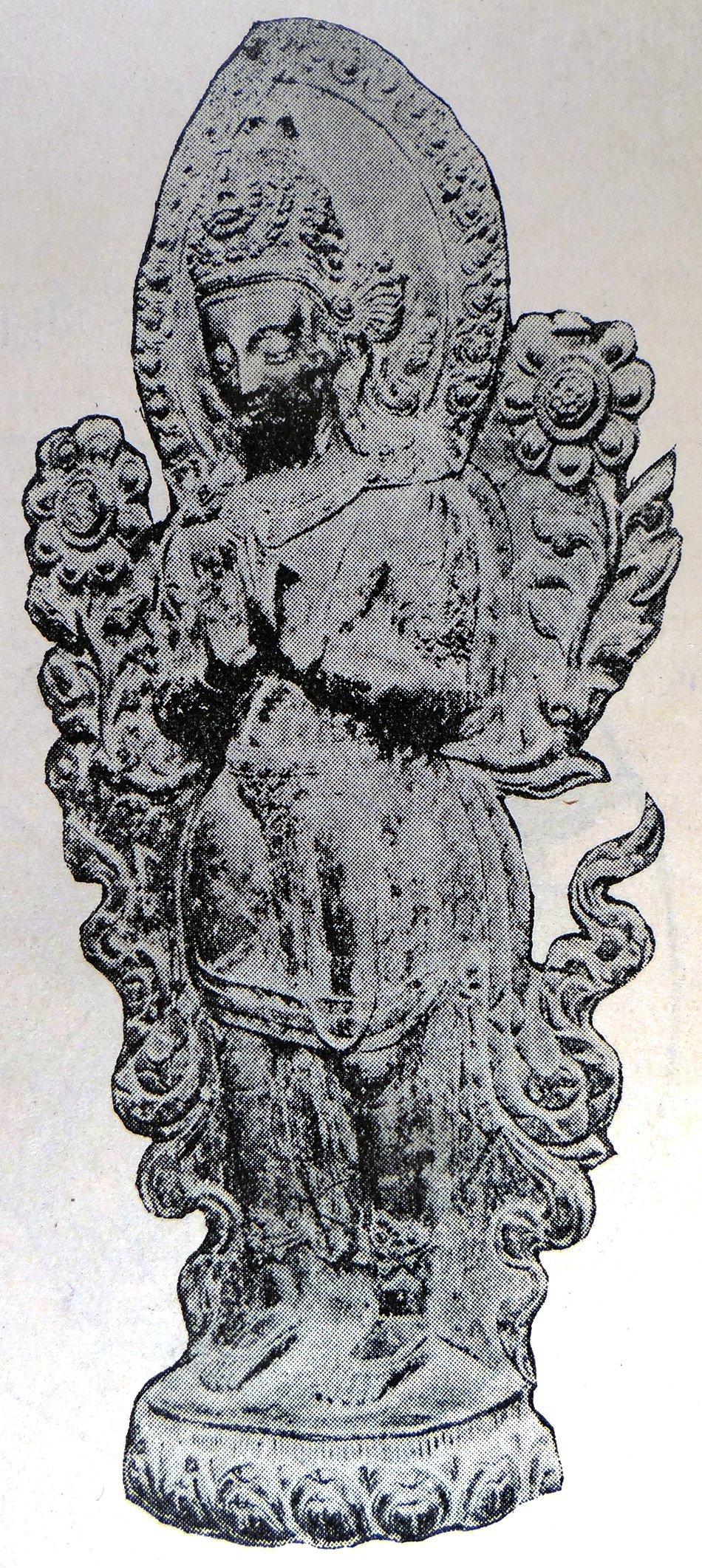The Indian Buddhist Iconography
by Benoytosh Bhattachacharyya | 1958 | 51,392 words | ISBN-10: 8173053138 | ISBN-13: 9788173053139
This page contains an iconography image of Samantabhadra (Nepal) and represents figure 32 of the book Indian Buddhist Iconography, based on extracts of the Sadhanamala English translation. These plates and illustrations represent either photographs of sculptures or line-drawing reproductions of paintings or other representations of Buddhist artwork.
Figure 32 - Samantabhadra (Nepal)

Figure 32: Samantabhadra (Nepal)
The Bodhisattva with the Cakra symbol is Samantabhadra and is thus affiliated to the Dhyāni Buddha Vairocana with the Cakra symbol. He belongs to the Tathāgata Kula. When represented, he either stands erect or sits in different sitting attitudes, such as Dhyāna, Lalita or Bhadra poses on a full-blown lotus. He usually holds the stem of a lotus on which the family symbol, the Cakra, is shown.
Samantabhadra is known in Tibet and China; and is frequently represented in the Buddhist countries of the North. One of his images is illustrated here in Fig. 32.
Colour: white;
Symbol: cakra;
